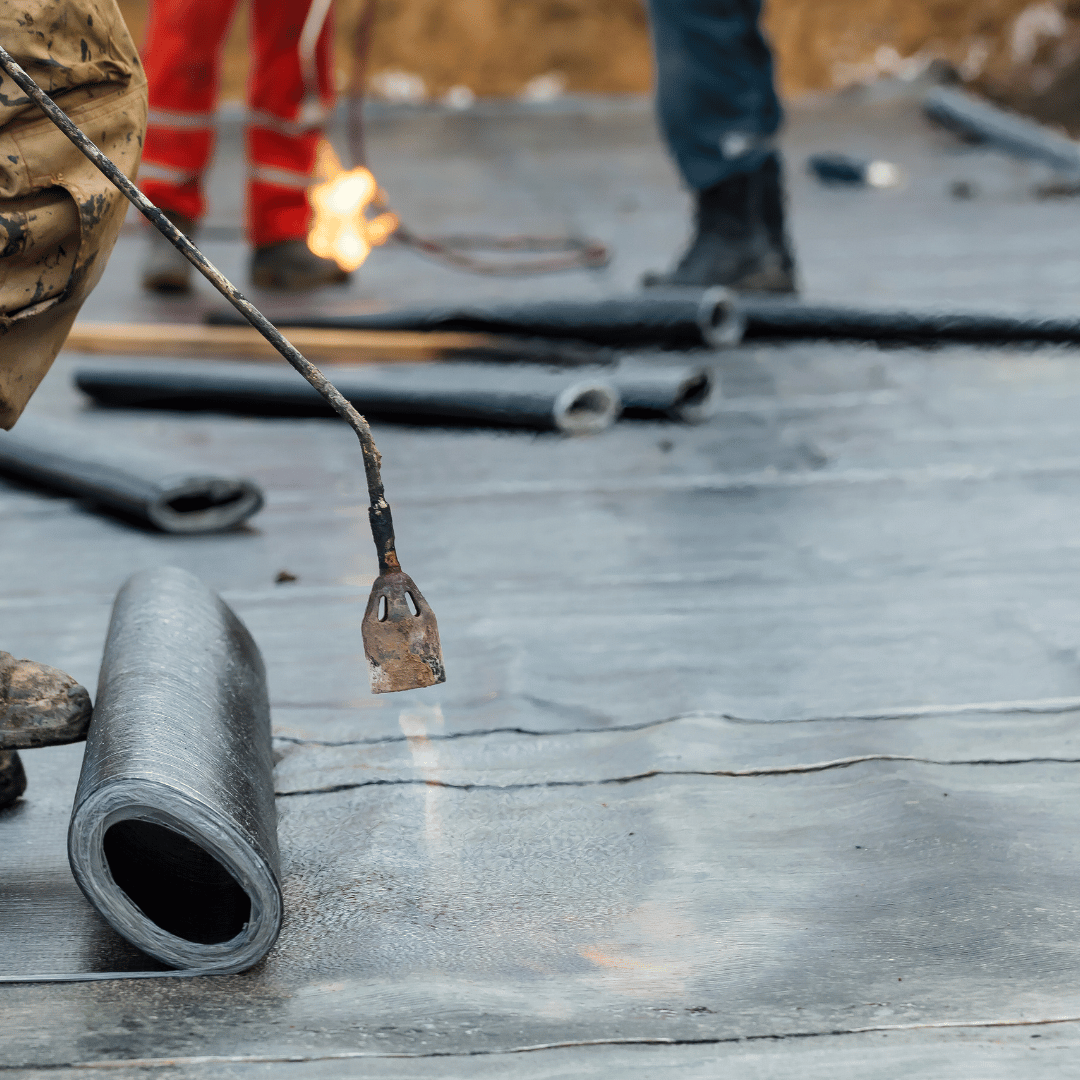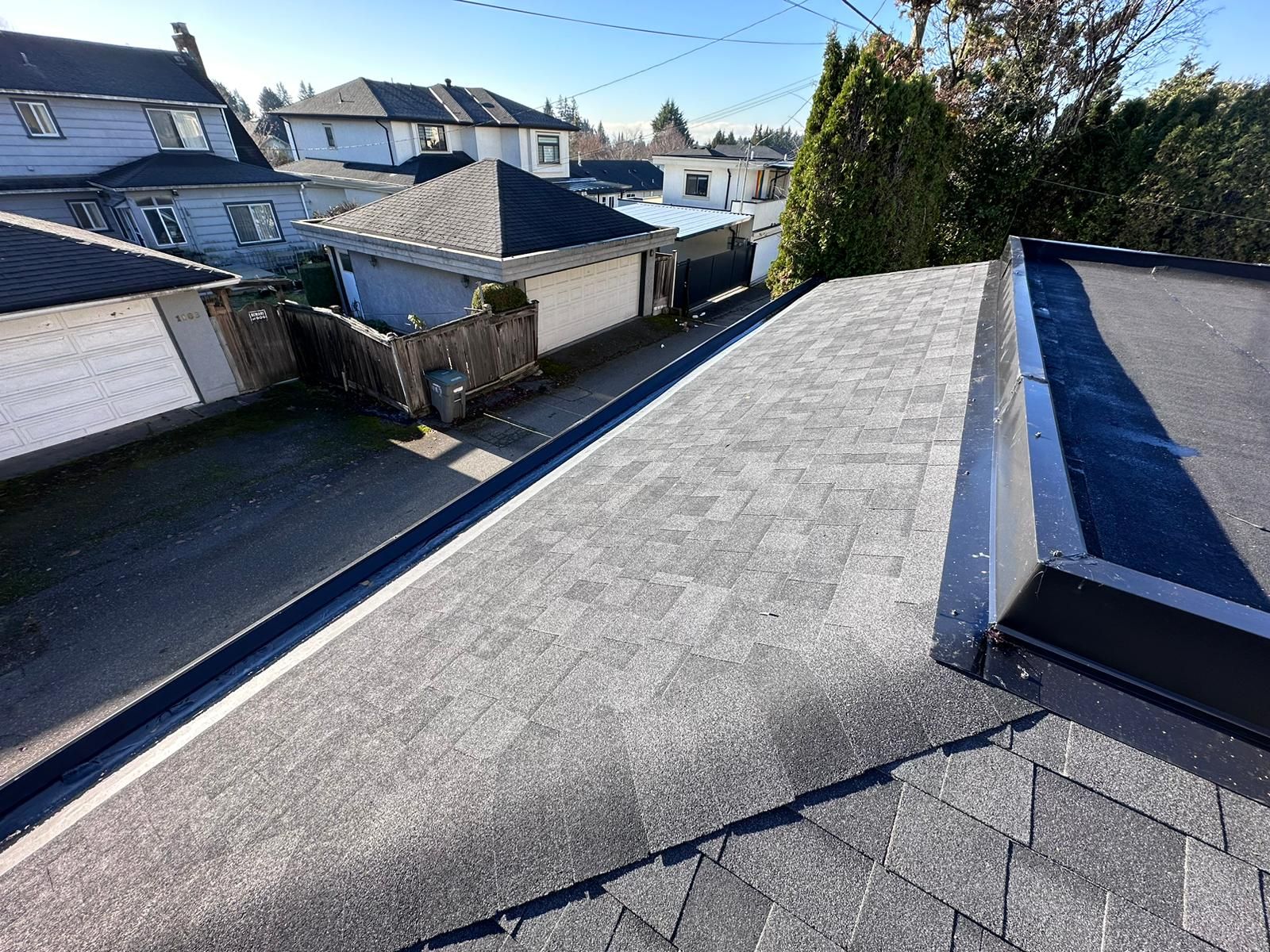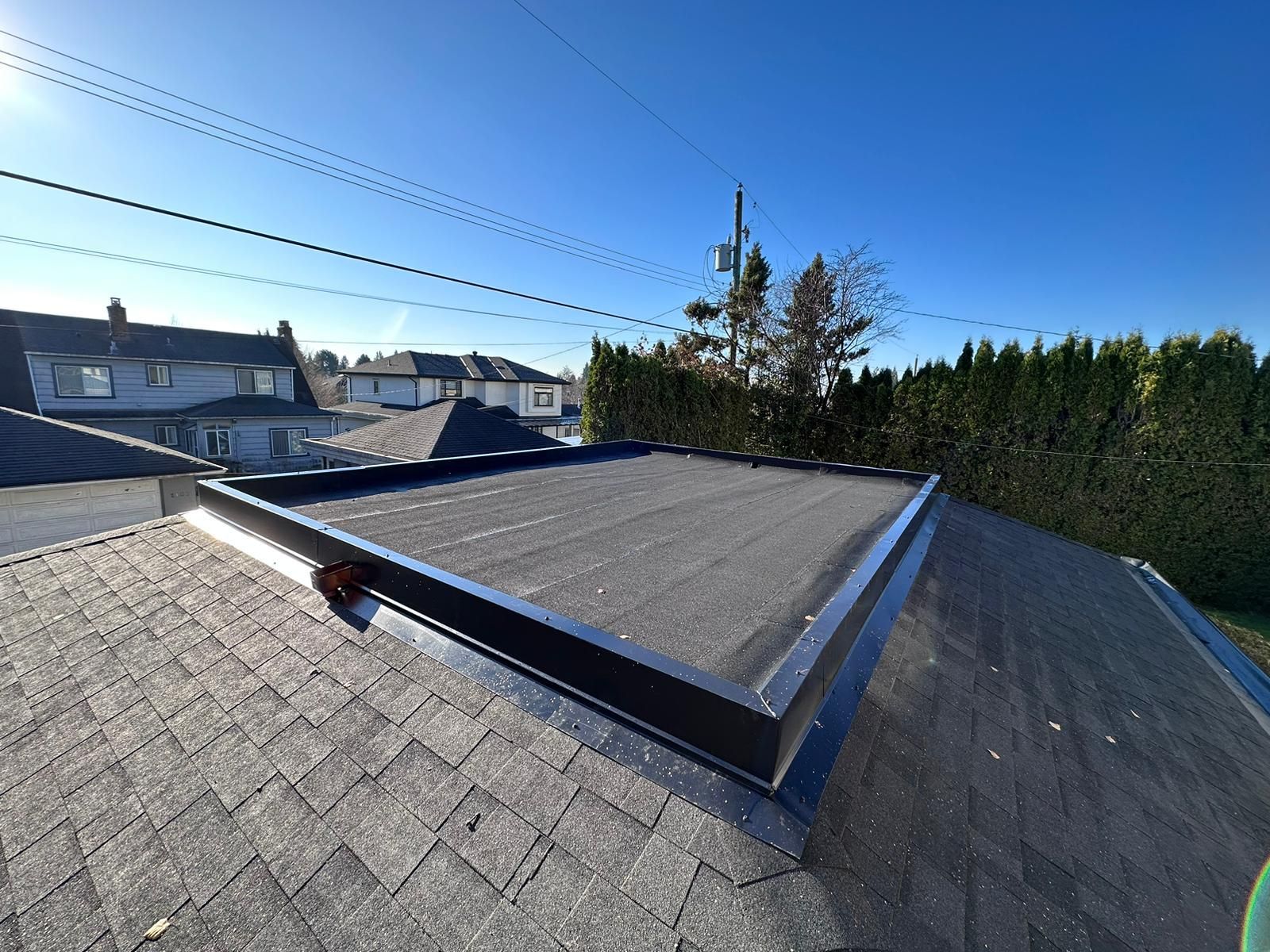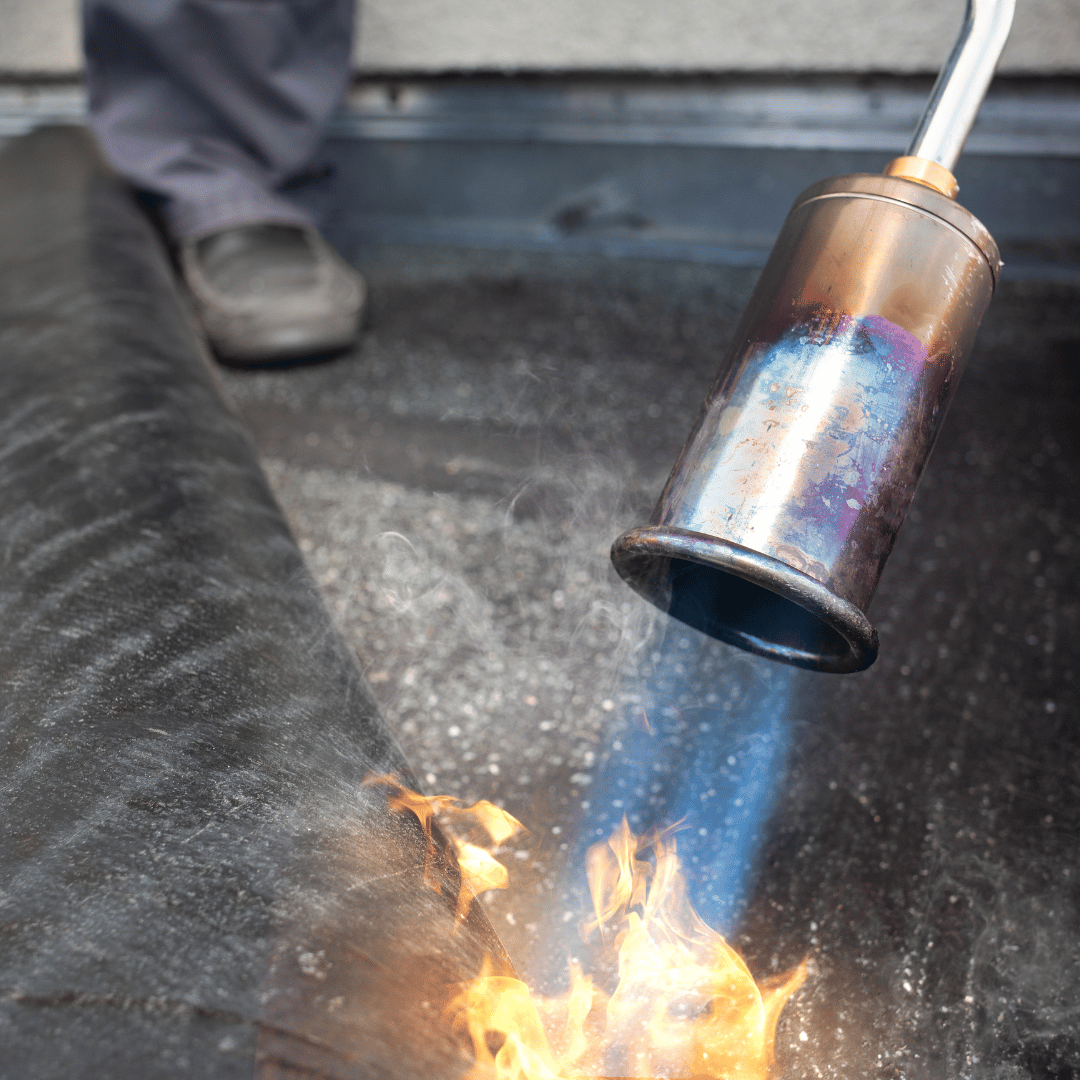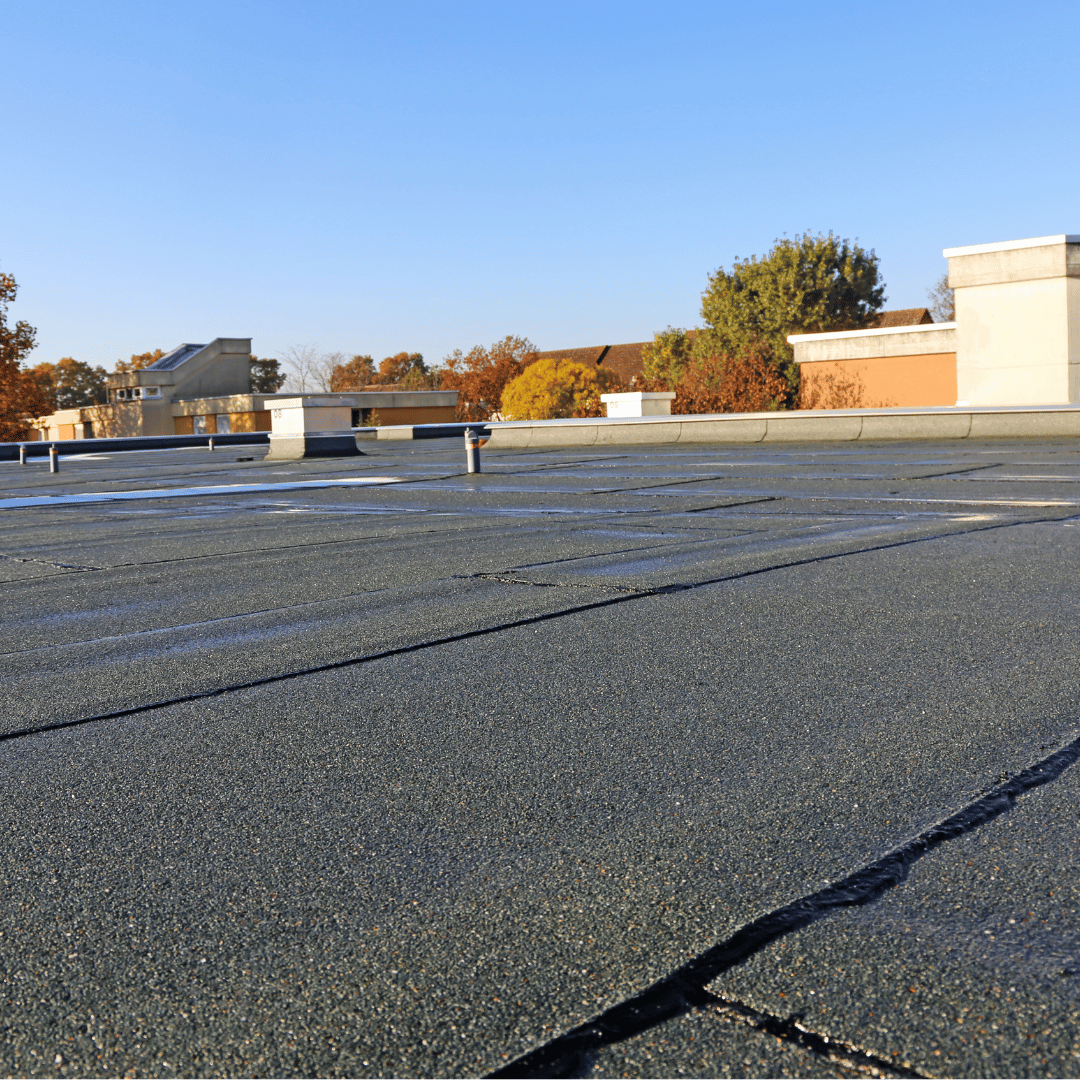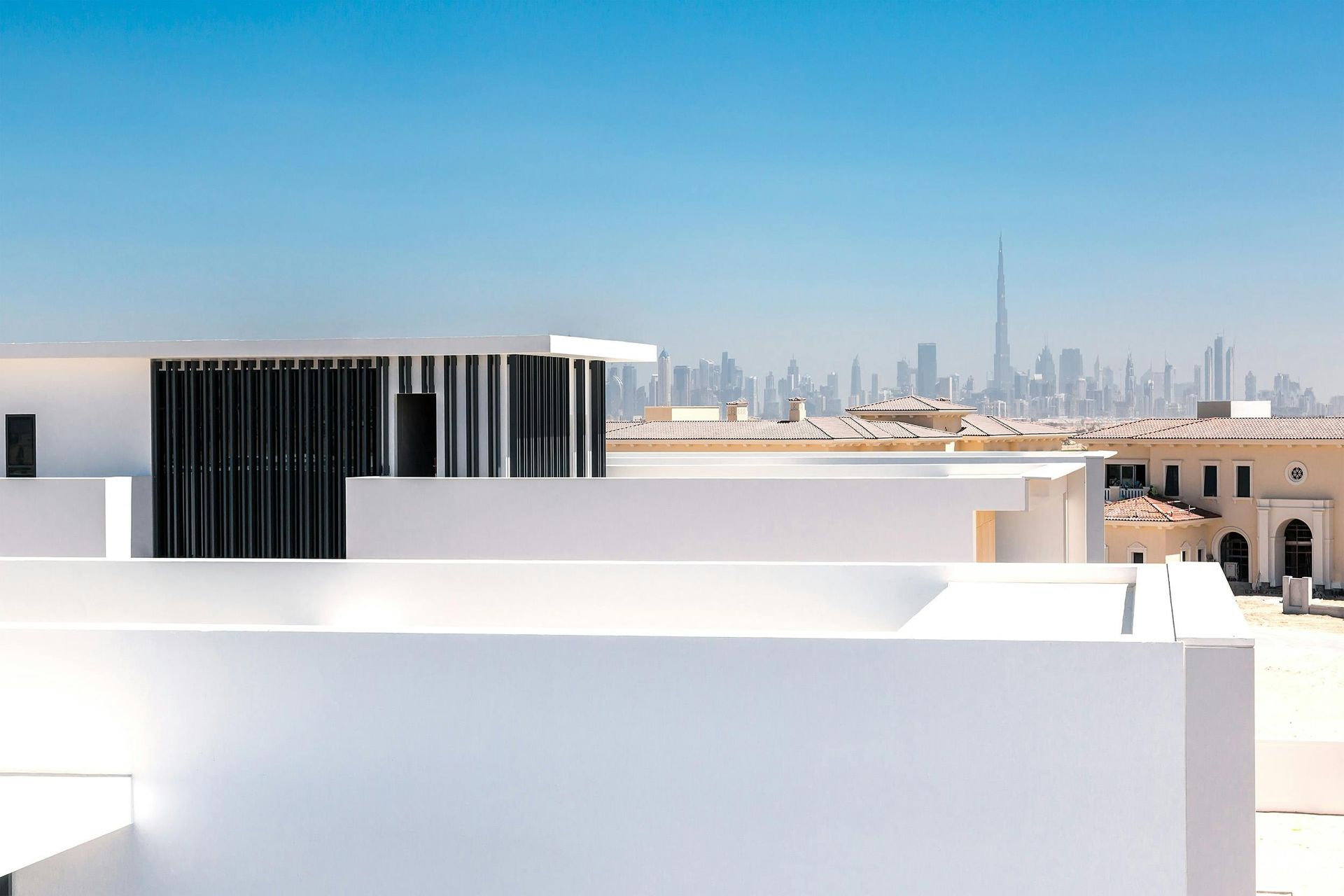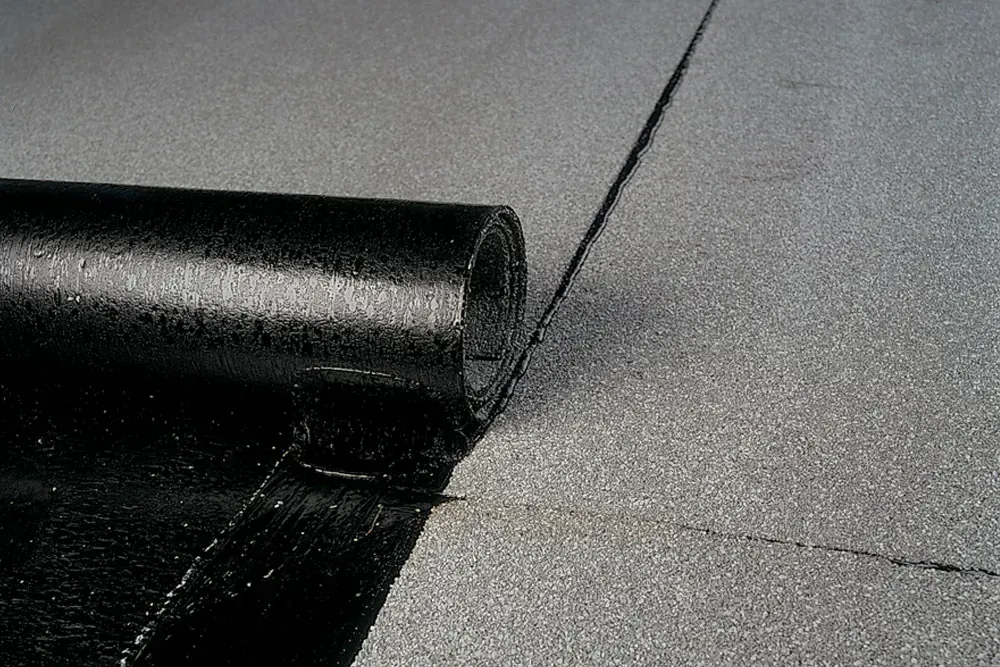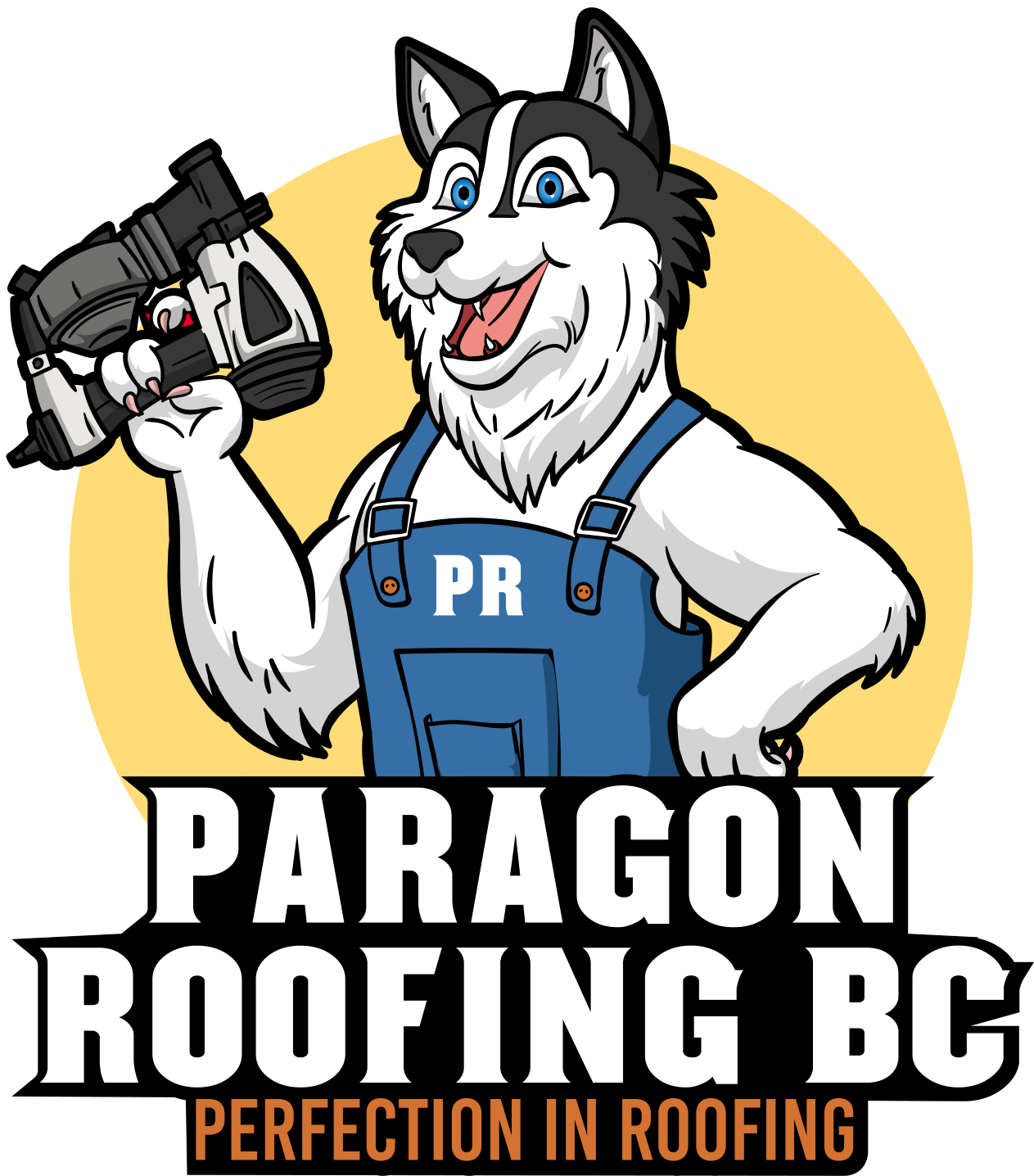Flat Roof Repair & Maintenance in Vancouver
Flat roofs in Vancouver don’t usually “suddenly fail.” They slowly collect small issues—blisters here, a weak seam there, a bit of ponding that never fully dries—and then one heavy storm exposes all of it at once. Repair and maintenance is about staying ahead of that moment.
Here’s how we look at flat roof repair and maintenance in Vancouver, from the patterns we see every day to the way we track leaks and keep systems alive longer.
Common Flat Roof Problems We See
Once you’ve been on enough flat roofs around Vancouver, you start seeing the same villains over and over again. Different buildings, same patterns.
Some of the most common issues:
Blisters in the membrane
Raised, spongy bubbles where moisture or trapped air has worked its way between layers.
Left alone, they can crack, split, or get torn open under foot traffic or thermal movement.
Open seams
On torch-on, that might be a poorly fused lap or an edge that’s lifted.
On TPO or EPDM, it can be a weld or taped seam that’s come apart over time.
Seams are where all the stress lives—if something’s going to move or fail, it’s usually there first.
Membrane splits and cracks
Often in high-stress zones: transitions, corners, parapet joints, or areas with repeated expansion/contraction.
Can also appear where ponding water freezes and thaws, stressing the material.
Failed flashings
Around walls, parapets, skylights, vents, HVAC curbs, and pipes.
If those transitions aren’t detailed properly—or the sealants and laps age out—you get water sneaking behind the membrane instead of over it.
Chronic ponding areas
Low spots that hold water for days after a storm.
These sections age differently from the rest of the roof: softer surface, faster breakdown, more leak risk.
Individually, each issue might look small. Collectively, they’re what turns “a flat roof that seems okay” into “why are there stains in the ceiling of the third floor?”
Flat Roof Leak Detection & Repair
Flat roof leaks in Vancouver are notorious for playing hide-and-seek. The stain on the inside doesn’t always sit right under the leak on the outside. Water can:
- Enter at a seam or penetration
- Travel between the membrane and insulation or deck
- Show up metres away as a drip inside the building
So we don’t guess. We investigate.
A proper flat roof leak diagnosis can involve:
Surface inspection in the broader area, not just the square metre above the stain.
We look at all nearby seams, drains, penetrations, and transitions.
Any older patches tell us where the roof has struggled before.
Moisture scanning and probing
Using moisture meters or probes to see where the assembly is actually wet.
Wet insulation or deck often shows a pattern that points back toward the real entry point.
Selective test cuts (when needed)
In more complex cases, we’ll open up small sections of the roof to see what’s happening beneath the surface:
- Is the insulation soaked?
- Is water tracking along a particular layer?
- Is there rot at the deck?
These cuts are controlled, repaired afterward, and done with the understanding that finding the true source of the leak is cheaper and safer than chasing the visible symptom.
Once we’ve mapped the path of water—from entry to exit—we design the repair around the cause, not just the symptom. That might be as simple as rebuilding a detail around one drain, or as involved as cutting out and rebuilding a section of membrane, insulation, and deck.
Torch-On Patch & Overlay Repairs
For many flat roofs in Vancouver—especially torch-on (SBS) systems—targeted patch and overlay repairs can buy meaningful extra years when the roof is tired but not fully done.
There are a few levels to this:
Localized patch repairs
Ideal when the roof is generally sound but has a handful of problem spots.
We’ll cut out damaged areas (blisters, splits, failed seams), dry and prep the substrate, then install new base and cap layers tied into the existing system.
If the original membrane is decent, these patches can be very effective and long-lasting.
Detail rebuilds
Some leaks aren’t about the field membrane at all—they’re about bad details.
We might tear back and rebuild:
- Around a drain bowl
- At a wall-to-roof joint
- Around a skylight or vent curb
Here, the “patch” is really a mini-reconstruction of the detail, with proper laps, terminations, and protection.
Partial overlays / re-caps
When a large area is weathered but structurally sound and mostly dry, a partial overlay might make sense:
A new cap sheet or additional membrane layer installed over a section to extend its life.
This is especially common in strata or commercial settings where the goal is to get a few more safe years while planning a full replacement.
We’re always honest about the limits:
Patches and overlays are not a way to resurrect a completely failed roof.
If the insulation is soaked or the deck is rotting, overlaying just traps the problem and delays the inevitable.
But when the bones are good and the issues are localized or surface-level, torch-on patch and overlay work is one of the most cost-effective ways to keep a flat roof going strong in Vancouver’s climate.
Scheduled Maintenance Programs for Flat Roofs
Flat roofs don’t like being ignored—especially not here. The combination of rain, debris, and slow drainage means maintenance isn’t optional, it’s survival.
A good flat roof maintenance program in Vancouver usually includes:
Annual (or semi-annual) inspections
- Walk the entire roof.
- Check seams, blisters, penetrations, flashings, and edges.
- Look for early membrane wear, fresh ponding patterns, and damage from foot traffic or trades.
Drain and scupper clearing
- Remove leaves, needles, garbage, rooftop junk—anything that’s blocking water from leaving.
- Confirm that water actually flows to the drains and doesn’t stall in front of them.
Gutter and downpipe check (where applicable)
Make sure edge drainage systems are flowing, not overflowing back onto the roof.
Small repairs on the spot
- Seal up minor splits or open laps.
- Tighten or repair simple flashing issues.
- Address early-stage problems before they escalate into full leaks.
Over time, this kind of routine maintenance:
- Extends the life of the membrane
- Reduces emergency leak calls in the middle of a storm
- Gives you a clear record of condition year over year, which is gold for planning future budgets and replacements
The flat roofs that last? They’re rarely the ones with “perfect” installs and zero follow-up. They’re the ones where someone actually pays attention—inspects them, cleans them, and fixes the small stuff before Vancouver’s weather turns it into big stuff. That’s what proper repair and maintenance is really about.
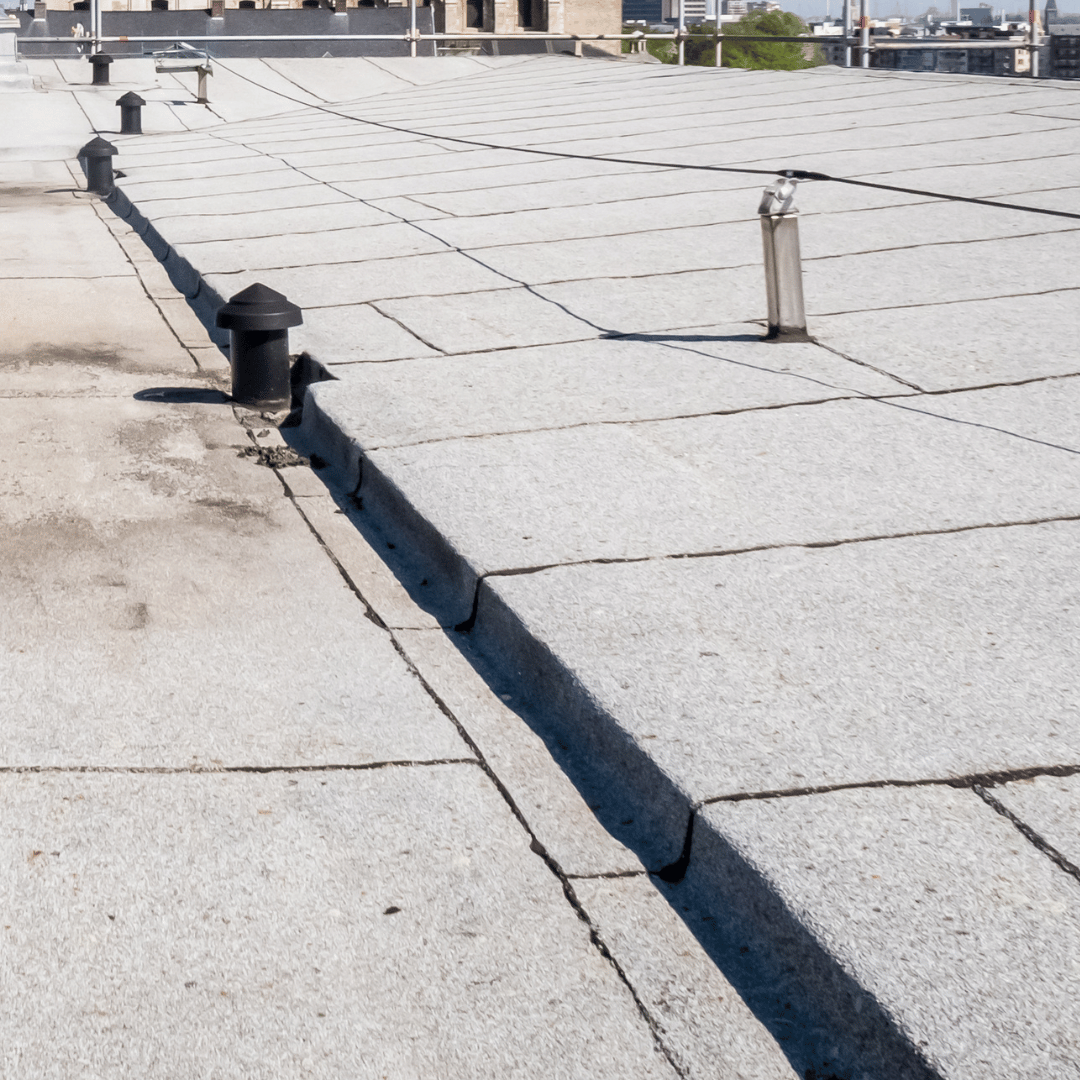
Flat Roofing for Commercial, Industrial & Strata Buildings
Flat roofing in Vancouver isn’t a single category—it’s three different worlds stacked side by side: commercial, industrial, and strata/multi-family. Each has different pressures, different budgets, different politics, but one shared reality: if the flat roof fails, everything underneath it becomes a problem—tenants, inventory, machinery, suites, you name it.
Here’s how those worlds differ, and how we approach each one.
Commercial Flat Roofing in Vancouver
Commercial flat roofs sit over businesses that cannot afford downtime. You’ve got:
- Retail shops that can’t close on a Saturday
- Plazas with multiple tenants and shared canopies
- Office buildings where people are working under fluorescent lights while we’re working on the roof
On these roofs, it’s not just about “stopping leaks.” It’s about protecting revenue and keeping the building usable while work happens.
When we take on commercial flat roofing in Vancouver, we pay attention to:
- Business hours and peak times
We plan noisy or disruptive work when it’s least painful—early, late, or off-peak if needed. Some work might be staged in sections so key entrances stay open. - Tenant coordination
Property managers don’t want to relay 30 different versions of the same update. We give them clear, written notices they can push out to their tenants so everyone knows:- When work starts
- Which areas are affected
- How long each section will be impacted
- System choice that fits reality
Commercial buildings usually need membranes that:- Handle foot traffic (HVAC techs, signage crews, maintenance)
- Deal with big drainage volumes
- Are practical to repair over time, not just pretty in a brochure
We design and install flat roof systems that can be serviced, not just installed—so the building has a long, low-drama roof life instead of constant emergencies.
Industrial Flat Roofs – Warehouses & Plants
Industrial roofs are a different animal. They’re big, often older, and full of constraints. We’re talking:
- Warehouses with forklift traffic and racking right under the roof line
- Manufacturing plants with sensitive equipment or processes
- Distribution centres where shutting down operations is wildly expensive
These roofs bring a specific set of challenges:
- Huge surface areas
A “small leak” here might be 40 metres from where it shows inside. The roof might run the length of a city block. That demands a very methodical approach to inspection and repair. - Safety and access
- Fall protection is more complex.
- Roof edges can be long and exposed.
- There may be multiple roof levels, skylights, old hatch openings, and random penetrations from decades of “just add this thing” changes.
- Heat, fumes, and internal processes
We have to work around:- Exhausts and vents
- Active machinery
- Areas where dust, fumes, or heat affect how and when we can work
For industrial flat roofs, our priority is stable, durable systems that can take a beating and still perform:
- Strong membranes (torch-on, TPO, EPDM depending on the building)
- Good movement accommodation for long spans
- Clear, predictable drainage patterns
And just as important, we coordinate with plant or warehouse management so work layers into operations, not across them.
Strata & Multi-Family Flat Roofs
Strata and multi-family flat roofs in Vancouver sit over people’s homes, parking, and shared amenities. Think:
- Apartment and condo roofs over suites and hallways
- Townhome carport roofs tied into pitched sections
- Amenity decks, rooftop patios, or common rooms with flat membranes underneath
When these roofs fail, it’s not just “a building issue”—it’s personal. Leaks drip into bedrooms, parking stalls flood, amenity spaces go offline, and everyone wants answers.
We approach strata and multi-family flat roofs with three lenses:
- Technical:
- Membrane choice (torch-on, TPO, etc.) that fits the building’s age, structure, and layout
- Proper drainage for shared roofs, carports, and amenity areas
- Careful detailing where flat roofs tie into walls, balconies, and sloped roofs
- Financial:
- Clear options for repair vs replacement
- Phasing plans when complexes want to tackle multiple buildings or sections over several years
- Maintenance plans to stretch the life of systems that are still viable
- Human:
- Notices to residents about noise, parking shifts, and temporary closures
- Clean job sites—no nails in driveways, no debris in walkways
- Honest, documented reporting for councils and owners
A multi-family flat roof has to be treated like an asset the entire community relies on, not just another square footage line item.
Working with Property Managers & Strata Councils
On commercial, industrial, and strata properties, the roofing work lives inside a management and governance structure. You’re not just patching a hole; you’re operating in a world of budgets, approvals, politics, and expectations.
We make that easier by:
- Providing detailed, decision-ready quotes
- Line-item breakdowns (materials, labour, disposal, safety, contingencies)
- Clear explanation of system options and expected lifespans
- Repair vs replacement strategies with real pros and cons
- Phasing plans that respect budgets and operations
- Building-by-building or zone-by-zone sequences
- Planning work around busy seasons, tenant sensitivity, or operational constraints
- Spreading projects across fiscal years if needed
- Noise & access management
- Coordinating which entrances, parking areas, or loading bays are affected and when
- Minimizing impact on key access routes during business hours or peak residential times
- Ongoing communication
- Progress updates during larger projects
- Photos of issues we uncover and how we’ve addressed them
- Clear explanations when conditions on the roof force a change in scope or price
In other words: we don’t just “do flat roofing.” We support the people responsible for these buildings—property managers, facility managers, and strata councils—so they can make informed decisions, answer to their stakeholders confidently, and keep their roofs off the emergency list.



